Puerto Rico’s Tripleta
Like many of the islands of the Caribbean, Puerto Rico is a culinary crossroads. The native Taino diet consisted largely of fresh-caught fish, root vegetables like cassava and yams, beans, squash, and peppers. The Spanish arrived in 1493, bringing with them preserved foods such as olives, salt cod and ham, as well as garlic and cilantro. The Spanish also brought slavery with them, and when the native population had been essentially destroyed by the Spanish colonization, Spain brought in their slaves from West Africa, introducing those culinary traditions. Trade with other colonizing powers as well as immigration brought those influences as well, resulting in “La Cocina Criolla,” a “creole” cuisine, a culinary language made up of borrowed words and phrases from many sources.
The Puerto Rican Tripleta is a creole all its own. The name tripleta refers to the combination of three meats that typify the sandwich. Those meats are typically a roast pork, the Puerto Rican pernil or Cuban lechon, along with cube steak and ham, but can include chicken or longaniza sausage. My friend Juan, when he first learned about this website, couldn’t wait for me to try a Tripleta. “It’s the ultimate hangover sandwich,” he told me.
My first encounter with the sandwich, sadly, did not live up to this promise. Mindy and I visited Latinicity, a pan-Latin food hall in the Block 37 building in downtown Chicago. It’s a very nice looking place, with multiple vendors and a full bar for those of you who can still live that three martini lunch lifestyle. The “Tortas & Molletes” stand’s menu described it as “hanger beef + braised pork + ham + tomato + crispy potatoes + pink sauce.” I had high hopes going in.
Now note the chunk of pork in the foreground that has fallen out of the sandwich. My understanding of kitchen science is far from complete but typically “braising” indicates a wet component to the cooking–a quick sear followed by a long slow stewing in liquid. I don’t believe this pork had ever seen a liquid, much less been cooked in one.
Moreover, both the ham and the steak had had the juices cooked out of them as well, making the eating of this sandwich very dry work. The thin swipe of “pink sauce” and the tomato/lettuce layer did little to improve the situation. I was only able to eat half this sandwich, and didn’t bother bringing home the other half to feed my dog.
Luckily, Chicago has a vibrant Puerto Rican community, largely centered around the northwest side neighborhood of Humboldt Park. Among the many different Latin restaurants in the area are a number of Puerto Rican cafes, food trucks, and sandwich shops, several of which have Tripletas on offer. The first one I tried was from Cafe Colao, a small coffee shop and bakery doing brisk business on a Sunday morning.
The ingredients of the Cafe Colao sandwich were similar to that of Latinicity–steak, ham, roast pork–but the construction was different, using softer bread that spent more time in a sandwich press, as well as thinner layers of meats and a better balanced ratio of meats to bread and condiments. Most importantly, vitally, thankfully, the meats in question were juicy and delightful.
The nearest referent for this sandwich though would be a Cubano–the same pork and ham, minus the pickles and mustard, with beef, lettuce, and tomato added. It was a great sandwich, but also somewhat tamer than I expected. The sandwich that Juan had described to me was a monster, a giant salty greasy hangover-killing fistful of bliss. This was a little juicy, a little messy, a little… little. Great sandwich though, and I had an excellent cortado with it.
Not too far from Cafe Colao, still in the Humboldt Park neighborhood, is Diana’s, whose Tripleta is described as “massive” in this ABC7 Chicago article from 2012. When I was searching for Tripletas in Chicago a few weeks ago this place was always at the top of the list, though I note now that when I search for “best tripleta in Chicago” there are a few other names ahead of it. Still, it’s a nice enough little mom-and-pop type operation, with such items as pastellitos and papas rellenas on display in a warming cabinet on the counter, but a worrying “fast casual” model that appears to have taken over their menu.
I ordered a Tripleta and one of the pastellitos, and wow. This thing is gigantic. I think the best sense of scale I can give you for this photo is that the sandwich was served in a paper-lined pie plate. So this plate is probably 9″ in diameter, yet the sandwich–cut in half, mind you–is spilling out over the edges on both sides.
The size is the main draw I think, though it’s a good sandwich. The meats were not quite as juicy as the meats from Cafe Colao–nothing like the arid flavorless waste I’d slogged through at Latinicity though, and helped out by the slices of yellow American cheese. The sandwich was well-pressed also, quite pleasantly crisp around the edges, and on good Cuban-style bread. There was a lot to like about it. There were some too-thick slices of quite pungent raw onion added to the sandwich that I found a bit offputting, though easy enough to remove.
I felt like I’d had enough though. As different as the three sandwiches were, they really were variations on a theme, the same ingredients presented in the same way with varying levels of effort and attention. Was this all there was to the Tripleta? I thought I remembered Juan describing it differently. So I asked him–were the tripleta sandwiches he remembered layered and pressed like a Cubano? He told me the real deal, the Puerto Rican street food, is always chopped up and mixed together a la plancha and sent me this video.
“There is either ham, chicken, and longaniza or Italian sausage. Or the pernil, beef, and ham ones. But I recommend switching the chicken for the pernil instead. Pernil, ham, and longaniza. Woo!!”
The old pork trifecta, I agreed, and planned out a weekend of cooking.
Pernil
Pernil is an all-day thing, a slow-cooked pork shoulder, scored and slathered with a mixture of garlic, onion, oregano, cumin, chili powder, salt, pepper, olive oil, and red wine vinegar, then wet-roasted at a low temperature for hours and hours until the meat is practically falling apart.
Naturally, if I were making a roast like this, I’d want to have some appropriate sides to accompany it–one doesn’t simply make pernil and then throw it in a sandwich. That’s what you do with leftover pernil, in my mind. So naturally I made some Puerto Rican rice complete with pigeon peas.
I also made some pink beans, cooked with sofrito, achiote, and tomato sauce. Both recipes are here if you are interested.
Dinner was served–pernil with Puerto Rican rice and beans, a little lime juice squeezed over the top, and plenty of leftovers.
Longaniza
Puerto Rican longaniza is a bright red sausage given a big color boost from ground achiote and a flavor boost from garlic and oregano. The recipe that I used also called for both sweet and hot paprika, making the red color that much more intense. This sausage did not lack for flavor. After I cooked a small patty to test the flavors before stuffing it into casings, Mindy declared it the best sausage I’ve ever made. Not to toot my own horn too much folks, but I’ve made some damn fine sausages. She wasn’t wrong, though.
How do I describe this sausage to you? The texture is perfect, mostly coarsely-ground for a rustic feel but with enough of the meat fine-ground to help bind it together. There’s a slight amount of heat from the hot paprika and black pepper and some earthy notes from the achiote, but mostly there’s that alchemy of salt, garlic, and pork fat that marks a great sausage.
The DIY Tripleta
I do not have a stainless steel griddle suitable for chopping things as they cook. The griddle I like to use for these purposes is an electric griddle with a nonstick surface that would be utterly destroyed if I started chopping at it with a knife or a metal spatula edge. So I started on my marble cutting board instead.
That’s a bit over 4 ounces each of leftover pernil, ham steak, and my homemade longaniza. This, I learned, was far too much for one sandwich. However, I deboned the ham and diced up the meats and mixed them together. To this I added some thin-sliced yellow onion and a diced mix of green, yellow, orange, and red bell pepper.
Then I chopped it all up into even smaller pieces right there on the board.
I put the griddle on a medium temperature setting, added a little olive oil, and started cooking the mix.
Given that the meats were cooked and the vegetables were raw, I needed to leave this on the griddle a little longer than the meats needed to get the vegetables cooked down like I wanted. To keep the meats from drying out–that was the last thing I wanted to happen after complaining about dry meats in some of the sandwiches I bought–I drizzled a little of the pernil drippings into the mix a few minutes before pulling if off the griddle.
I was only able to get somewhere between a half and two thirds of it into this sub roll, which I’d heated for a few minutes in a 350° oven to crisp up the outside and soften the crumb.
I dressed the sandwich with lettuce and tomato, then with mayonnaise, ketchup, and mustard. A little hot sauce wouldn’t have been amiss either, but I skipped it for this sandwich, anticipating that I’d be sharing it with Mindy.
Mindy made her own sandwich instead, using about half the meat that I did. Ian demanded a separate one without any onions or peppers added. This big beast was all mine.
It was everything that Juan had promised. The meat juices soaked into the bread just enough to hollow themselves out a space, wrapping the bread around the contents like a cigar. It was a meat torpedo, the lettuce and tomato and sauces a sop to propriety, a nod in the direction of balance. It was glorious. I could eat one of these every day. I might not make it to my next birthday if I did, but I’d die happy.

I like sandwiches.
I like a lot of other things too but sandwiches are pretty great


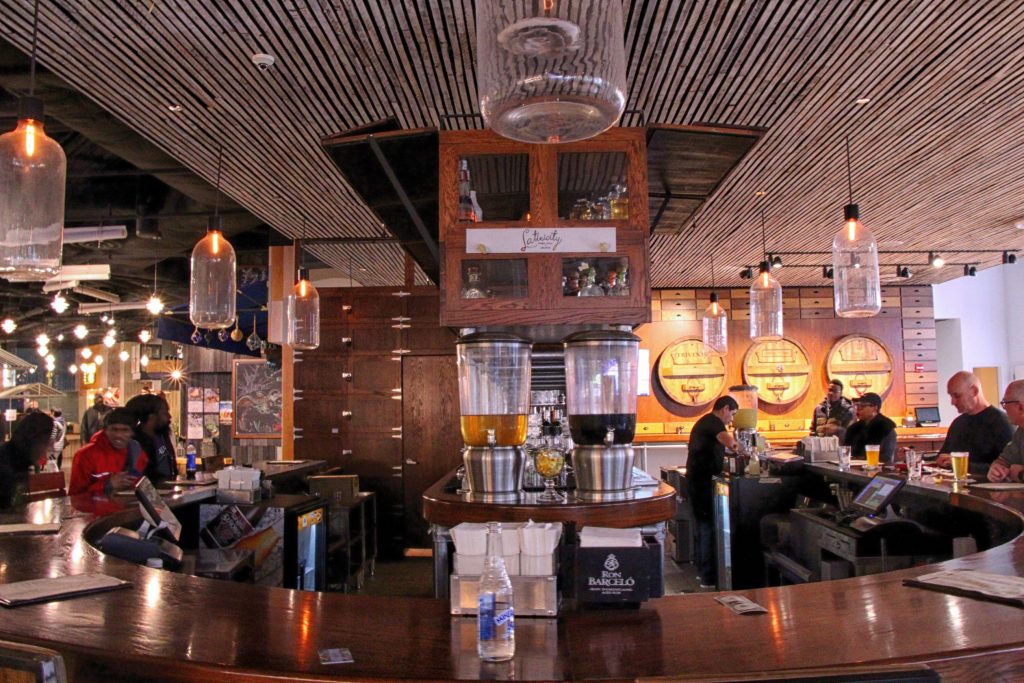
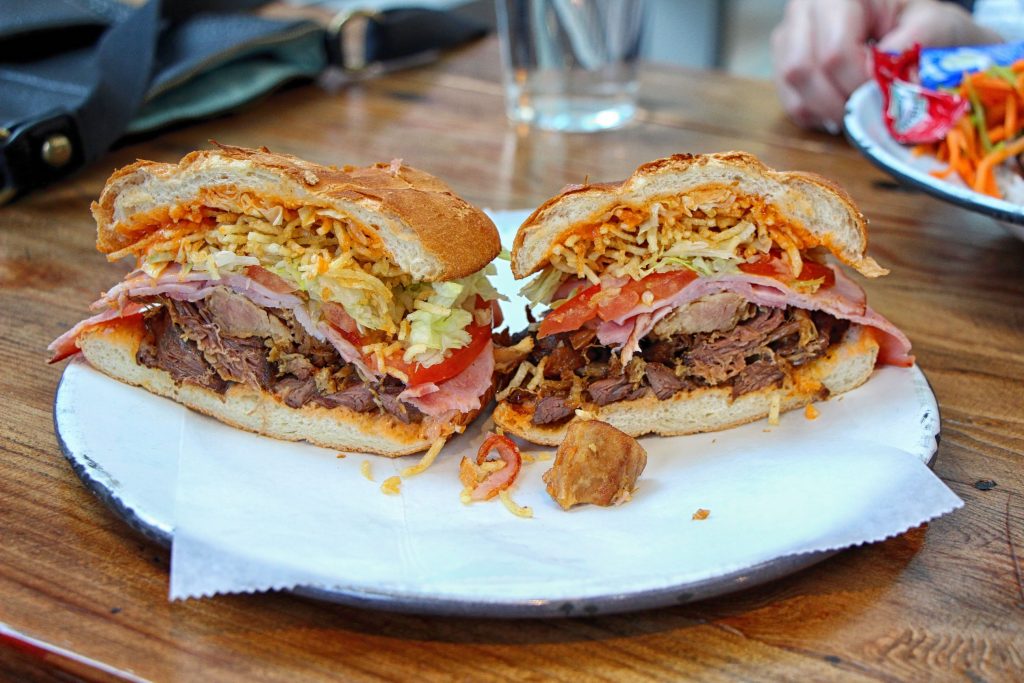
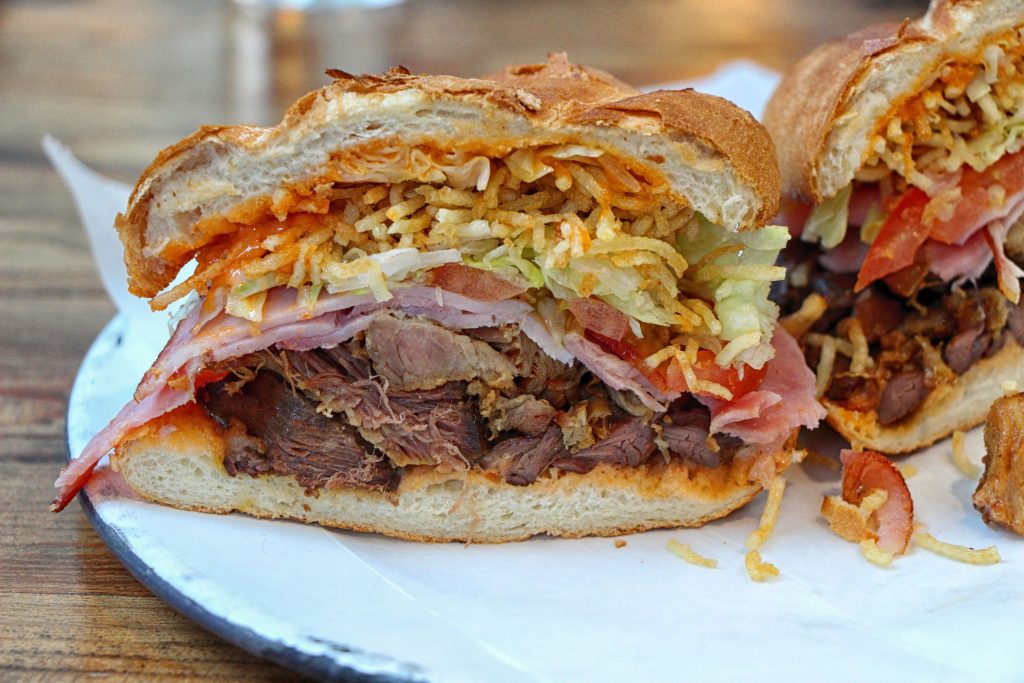
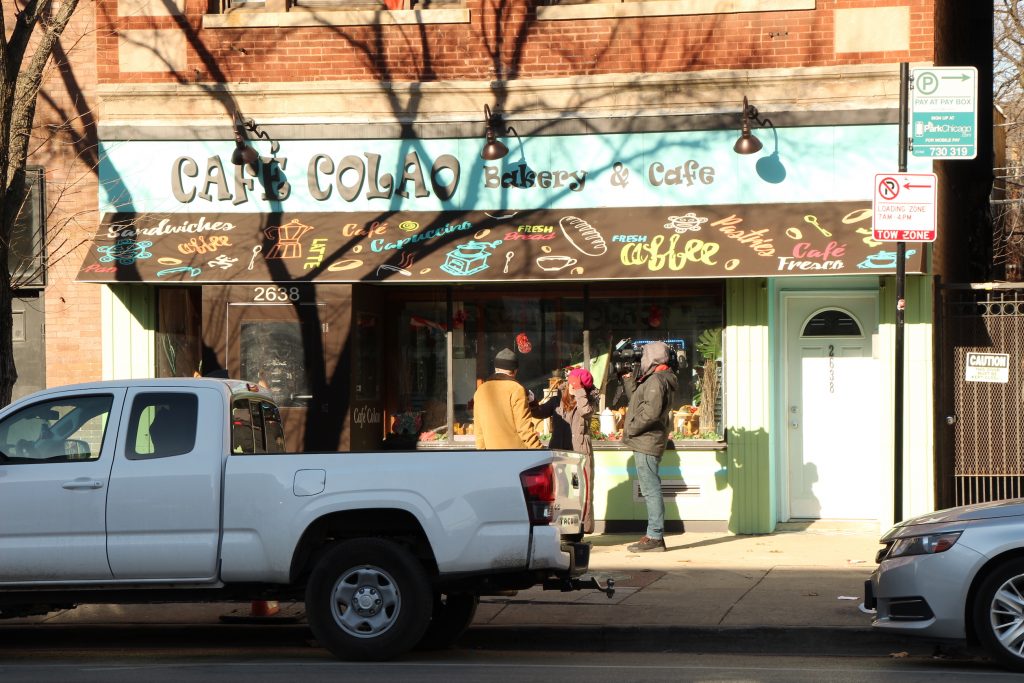
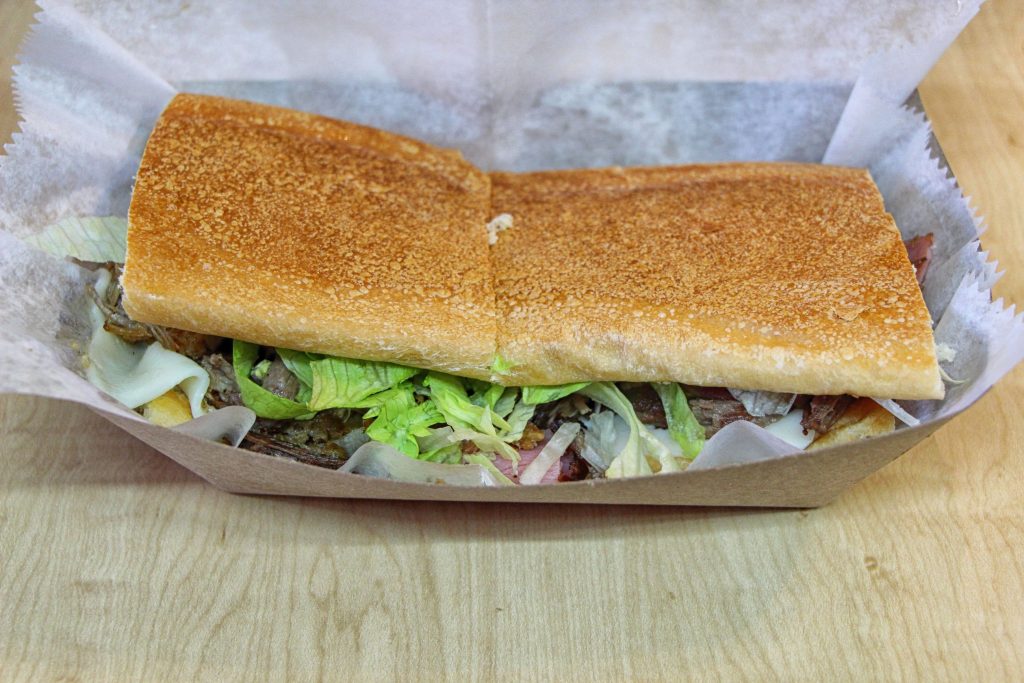
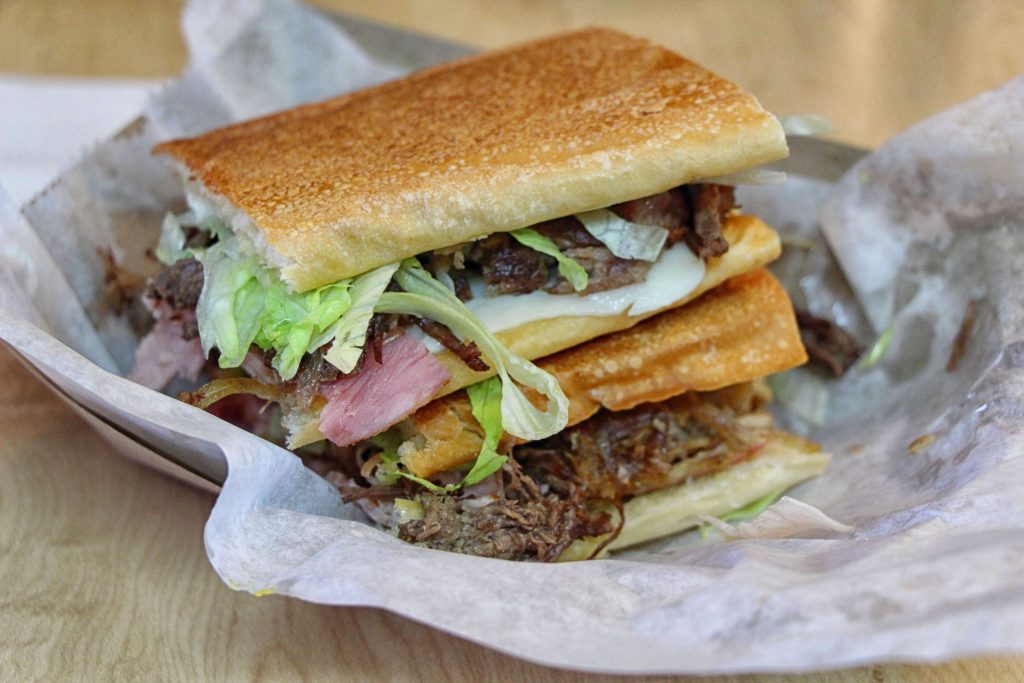

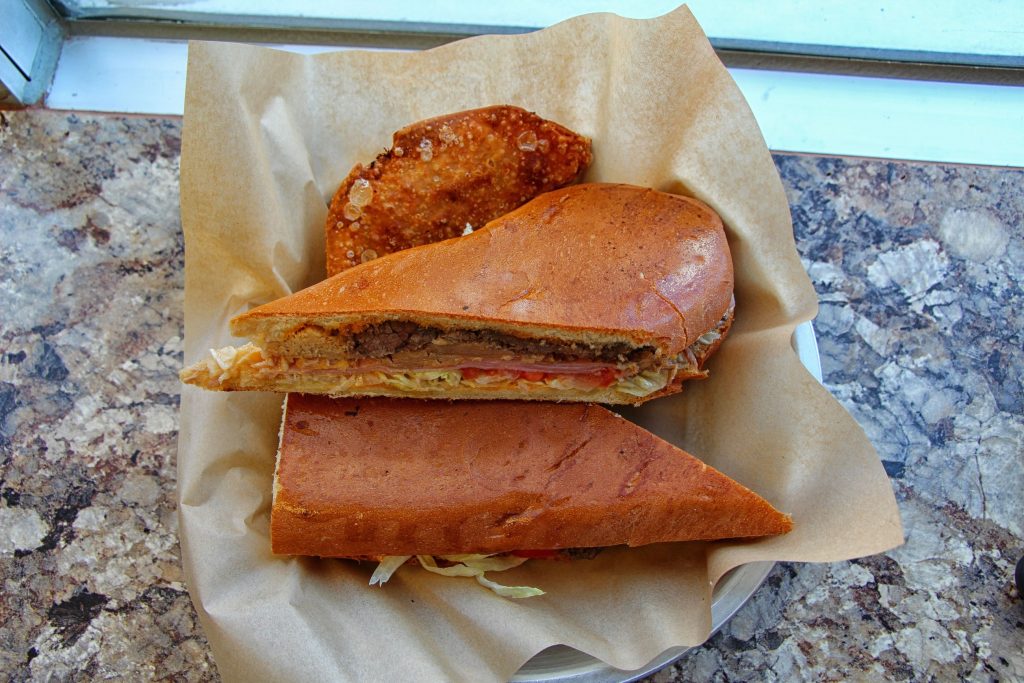
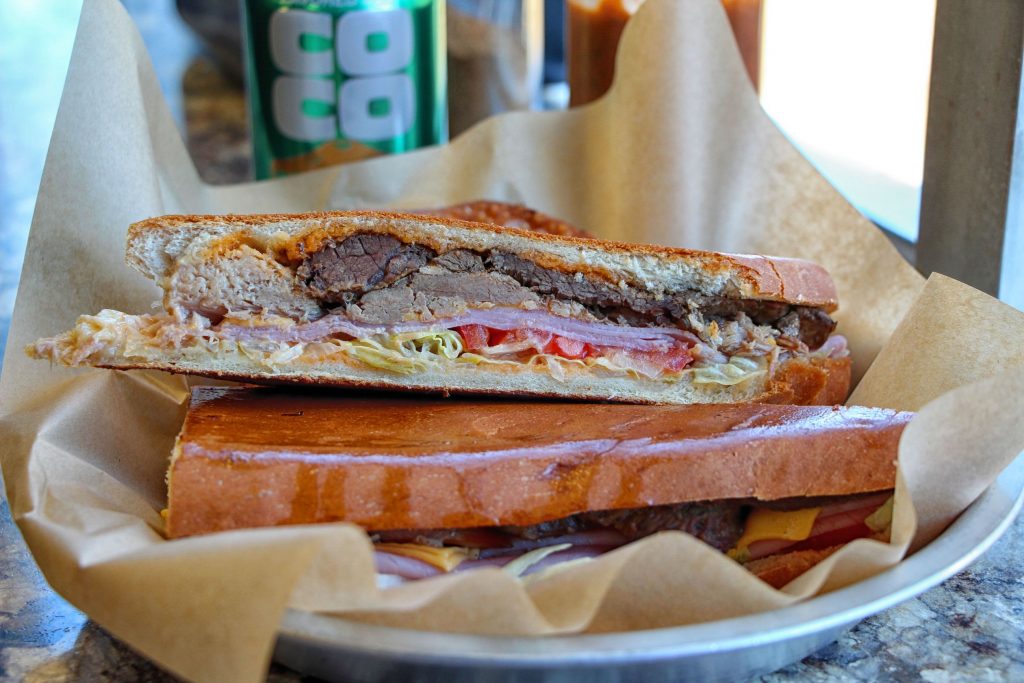
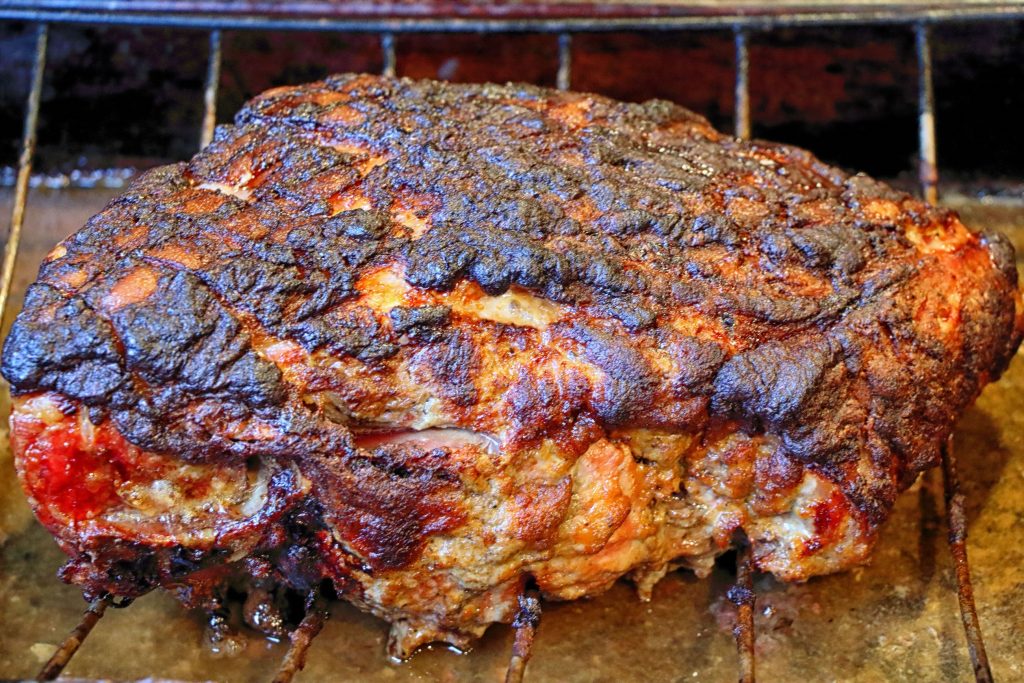
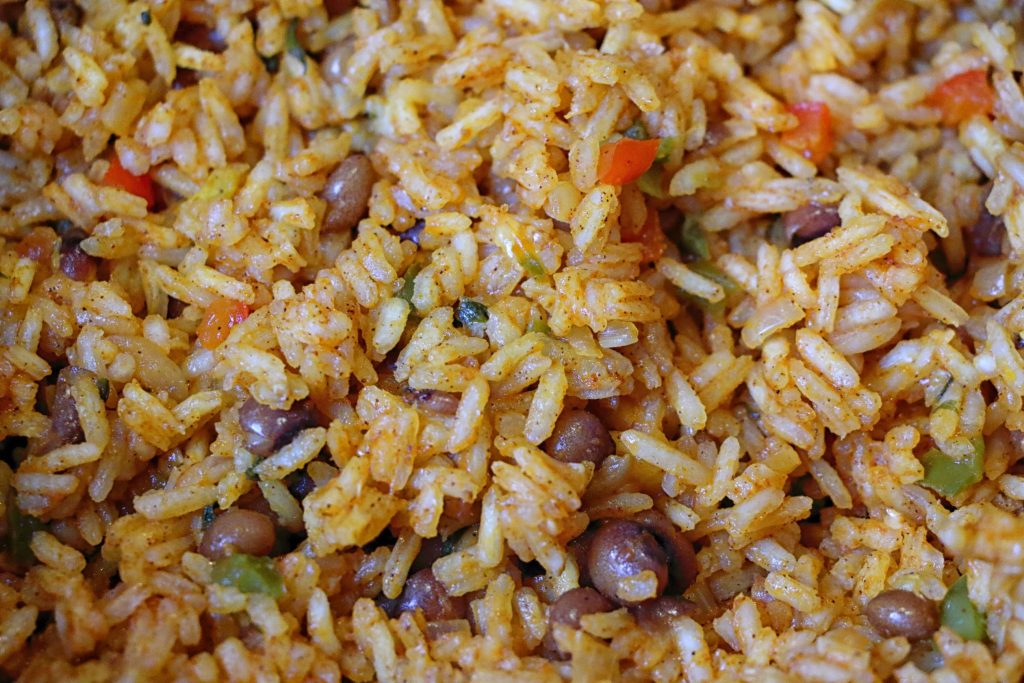
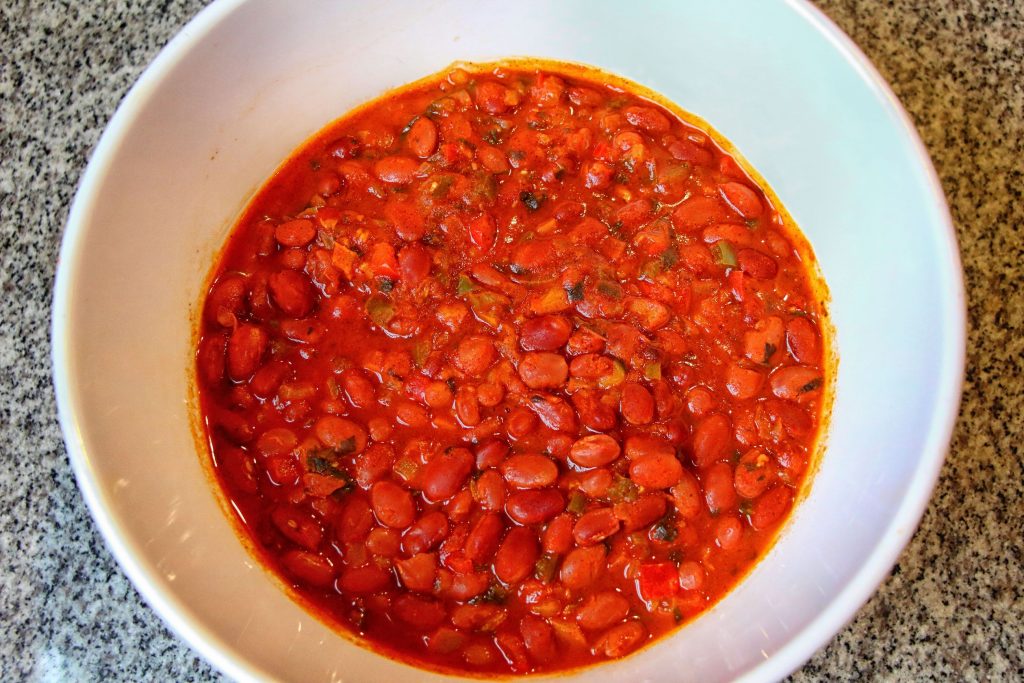
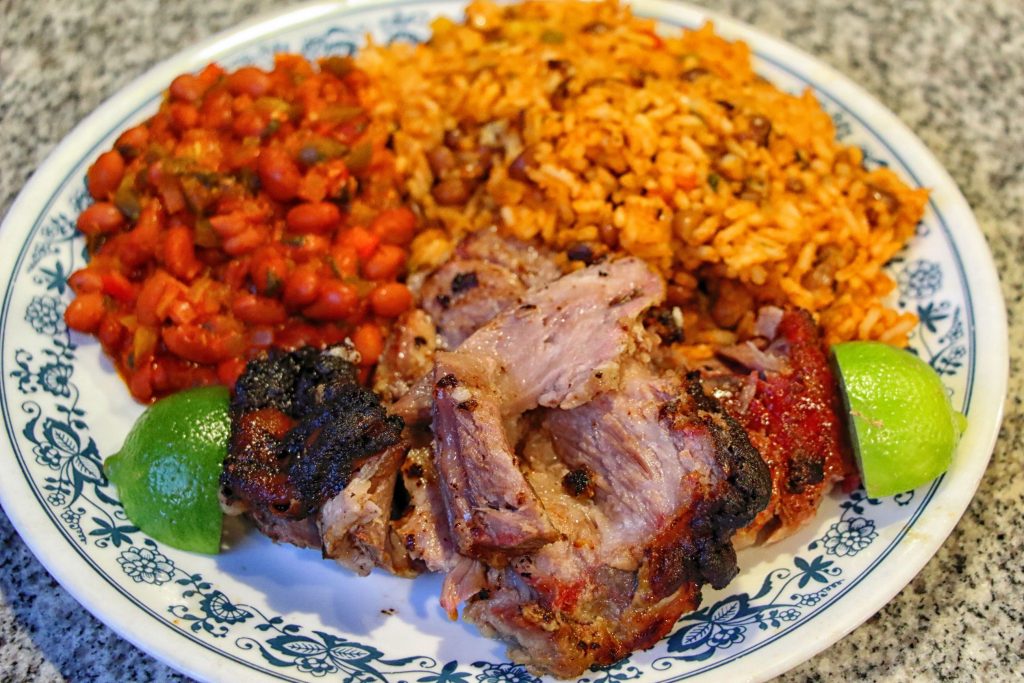
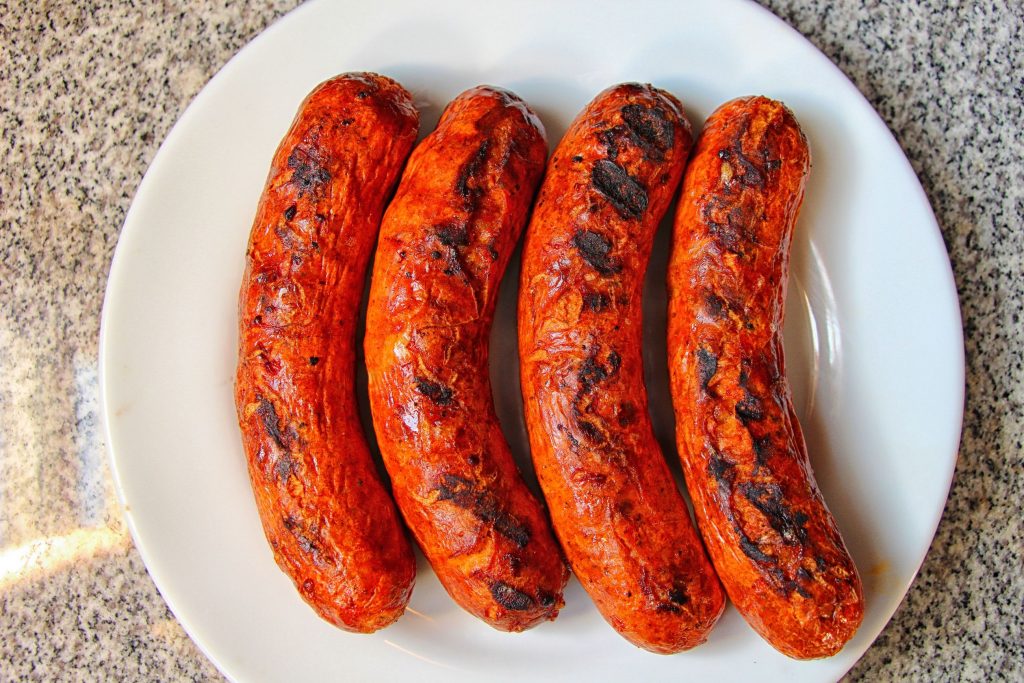
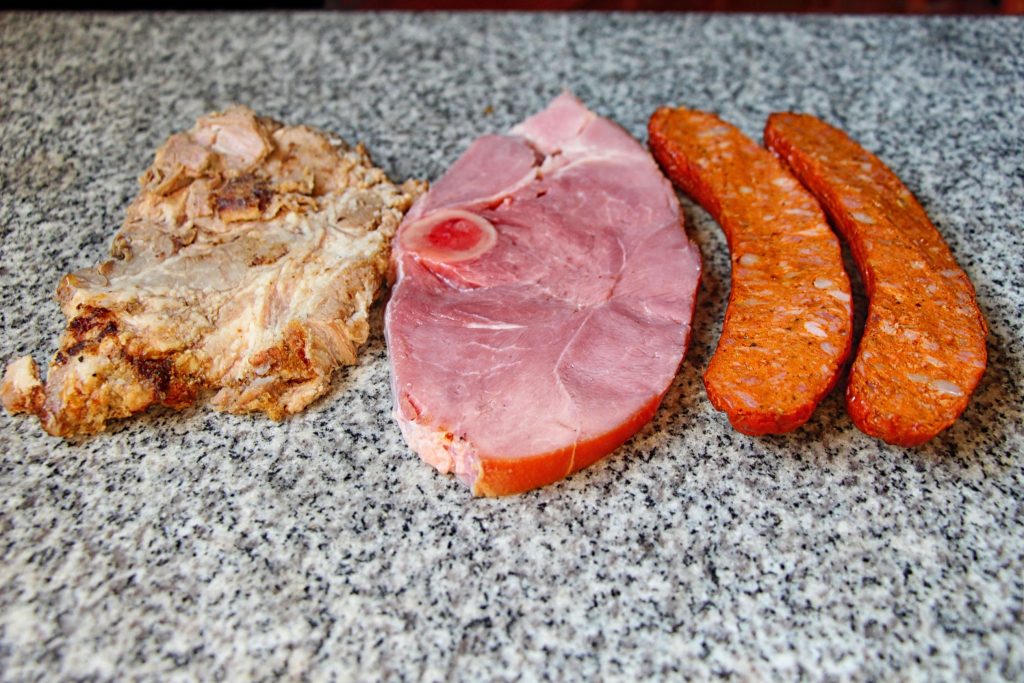
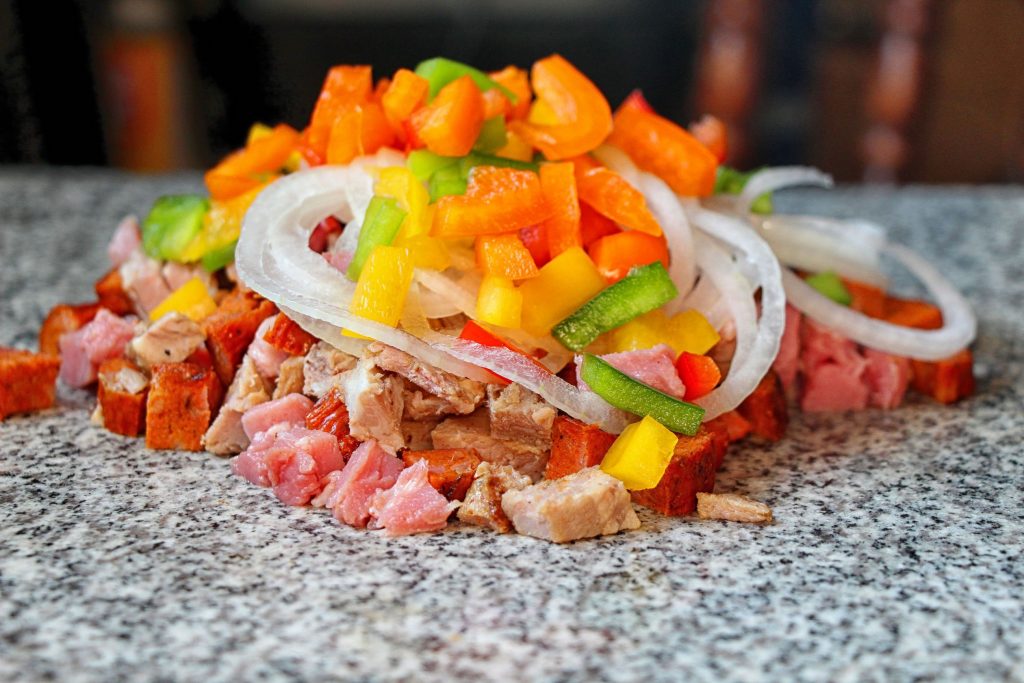
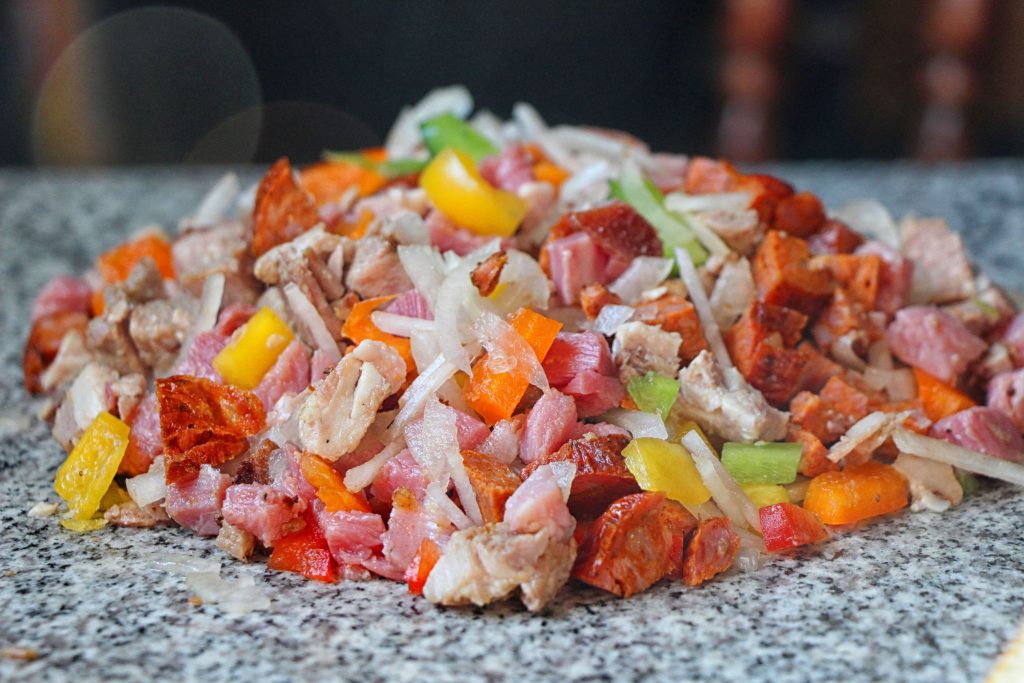
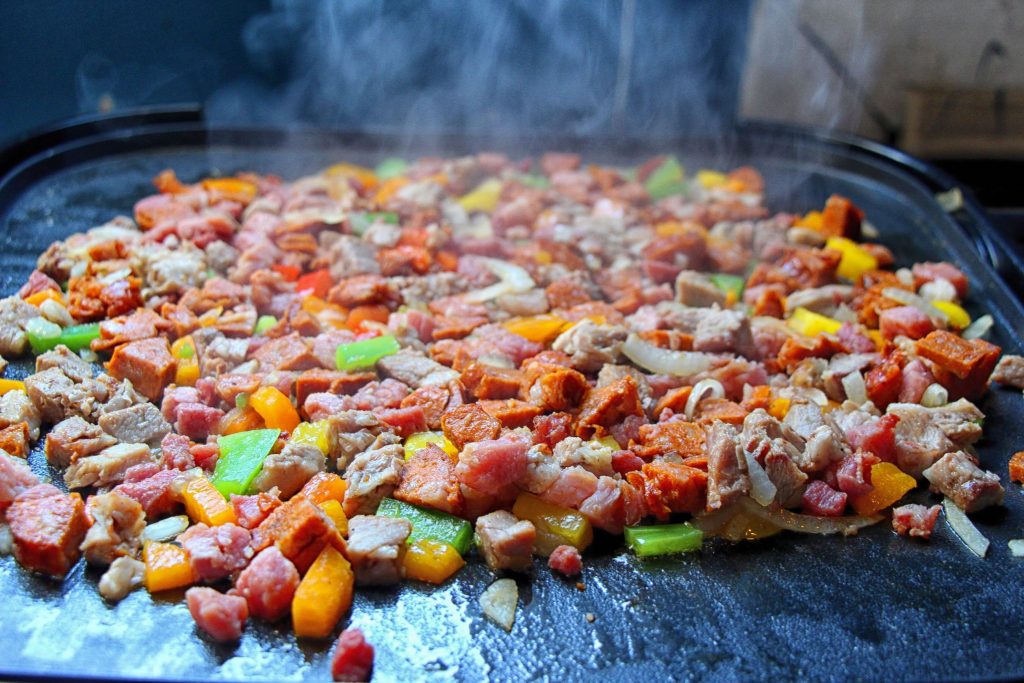
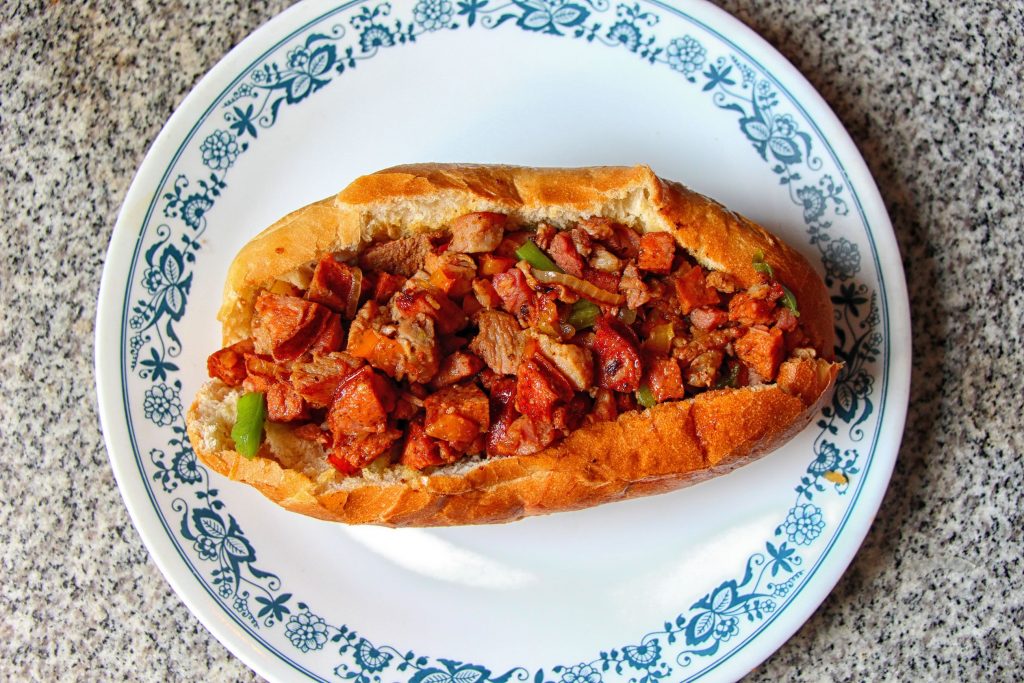
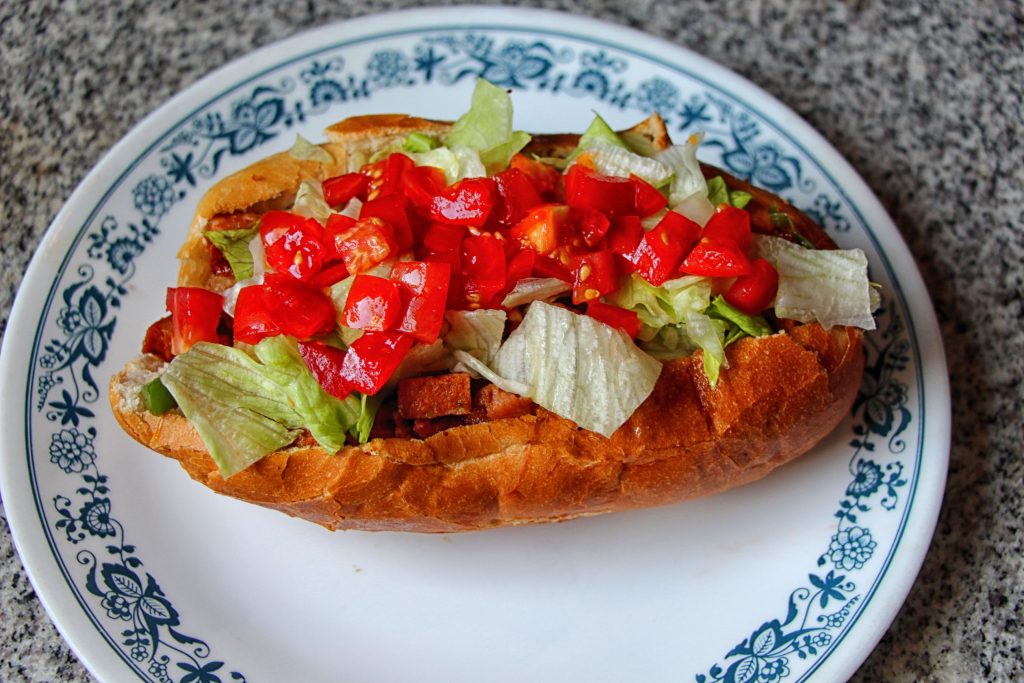
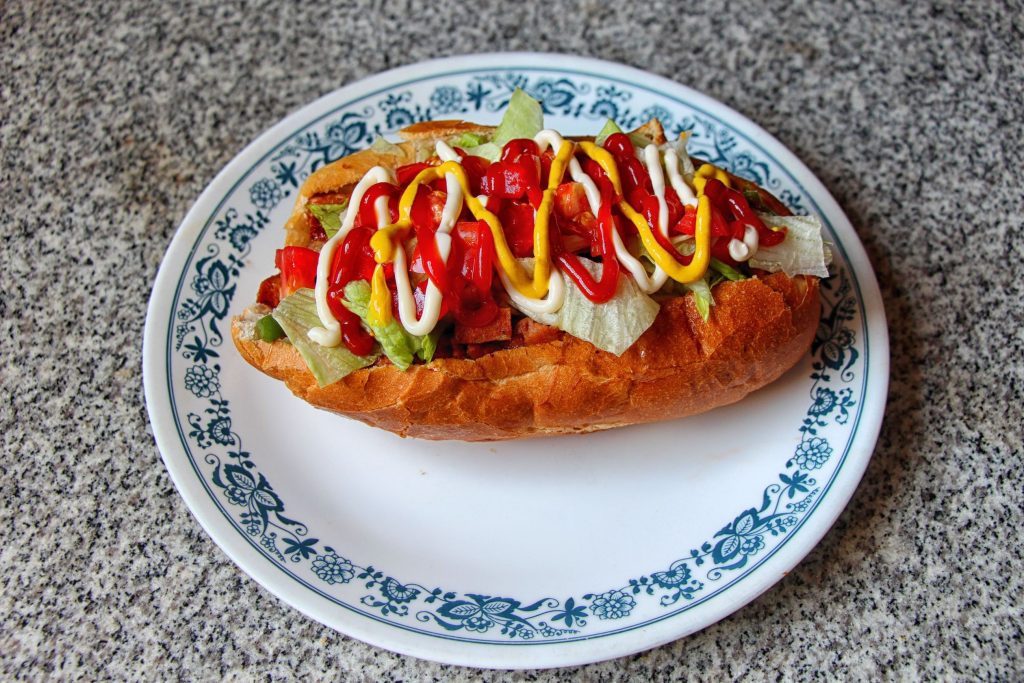
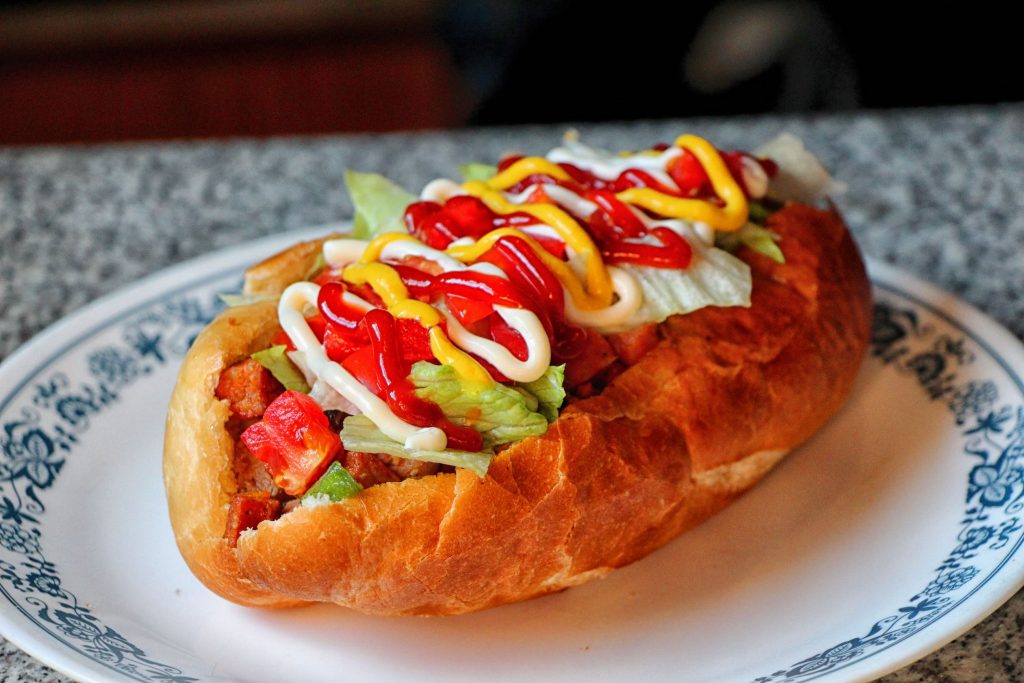


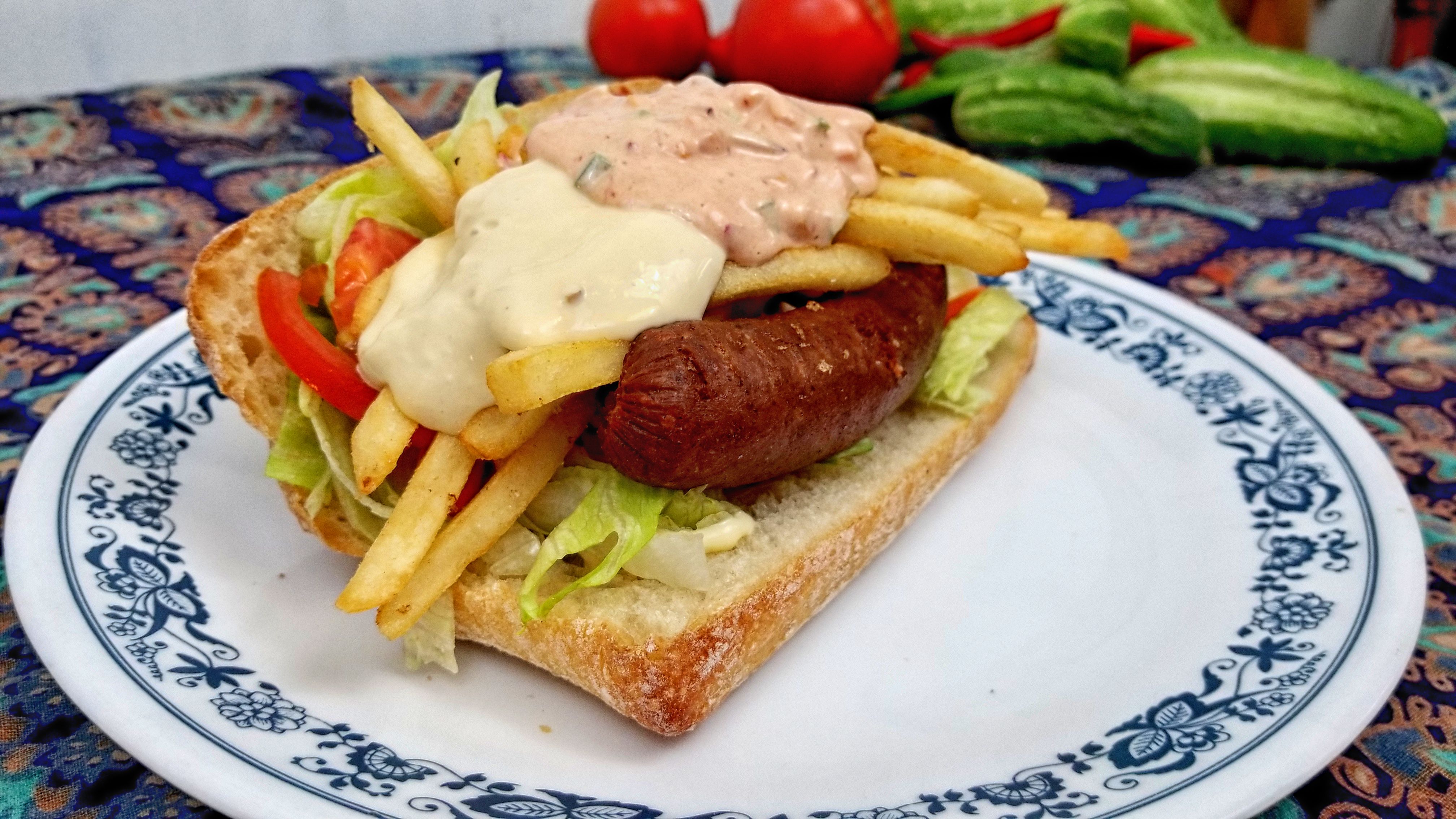






Amazing! Great Job Jim! The Tripleta you made definitely wins over the ones you tried in the area. Now I want to try it, haha!
Jim….Thank you for taking the time to write about our beloved Tripleta sandwich. Unfortunately, from reading your article, you have not eaten one as of yet. You first need “Pan Sobao” bread, which is a bread made with lard and sugar, a sweet massaged (meaning of sobao) bread. The three meats traditionally as you said, cube steak (beefsteak or bistec as we call it), pernil (pork butt) and regular sliced ham. You add mayo-ketchup, potato sticks and if you want lettuce and tomato. Different variations of the meat are seen everywhere, some add chicken instead of pork, etc. The bread is never toasted or heated or put on the grill. I really wish you can get your hand on one and update this article. Not because I was born and raised in Puerto Rico, but it is truly one of the best sandwiches in the world. As for the video your friend sent you, that is not considered a tripleta (with the peppers, onions, etc.) and the huge chunks of ham, this is rarely seen. Whenever you go and try one ask if the bread is: Pan Sobao, this is a good start. Take care.
Hi Hector! Thanks for the comment. You’re right, I don’t believe that Pan Sobao was used in any of the sandwiches I tried or even mentioned in the research I did. It’s possible I can find the bread at a bakery in Chicago, or make it myself, but it would be even nicer to make my way to PR and try the real thing some day. I will be sure to look out for it regardless!